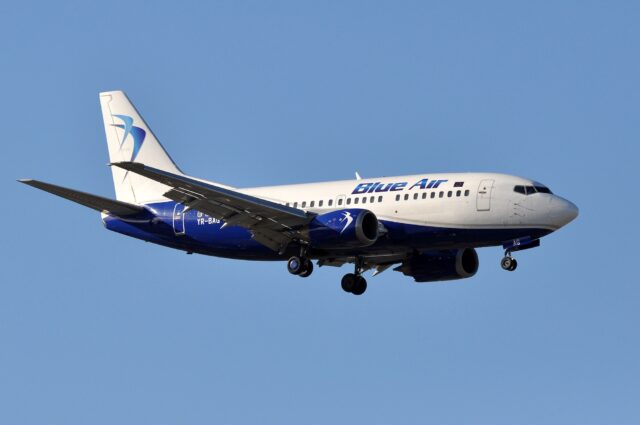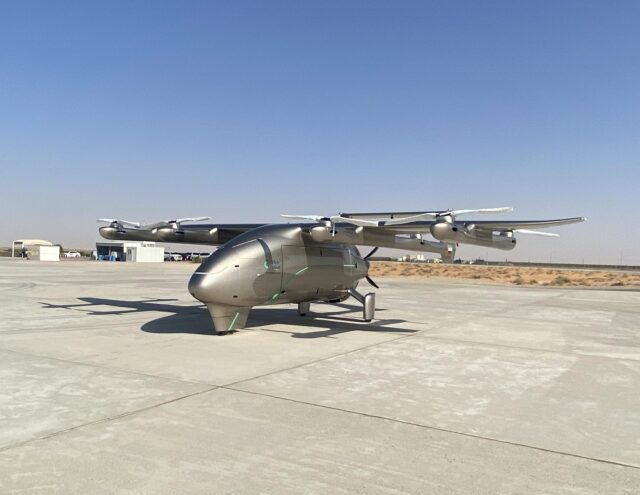Air Astana: The £10 million gamble that became Central Asia’s biggest aviation success

October 24, 2025

Air Astana’s origin story still sounds improbable. Emerging from the ashes of the post-Soviet aviation collapse, it set out to prove that a Central Asian flag carrier could be both safe and profitable.
Launched in 2002 as a joint venture between the Government of Kazakhstan and BAE Systems, the airline began life with a token amount of capital and a mandate to stand on its own commercial feet.
“The investment into the company was ten million pounds; five million from each shareholder,” Air Astana CEO Peter Foster told AGN in Almaty last month. “And that’s the only money we ever had.”
He adds that the founders agreed on a set of simple rules: there would be external financial support, no more capital injections, operations would meet international safety standards, and management would be allowed to run the airline commercially and independently.
“There would never be any state support, financial support, or any further injection of capital from shareholders,” said Foster. “Over the years, we’ve operated entirely on that basis.”
Foster, who joined as chief executive on 1 October 2005, is marking two decades at the helm of the gutsy Central Asian airline. Shortly after our visit to Almaty, the company announced he would be stepping down in March 2026, to be succeeded by Ibrahim Canliel, the current CFO and an Air Astana veteran of two years more than Foster.
While Foster’s time at the helm of Air Astana is coming to an end, the legacy he leaves behind won’t be forgotten in a hurry. From a fleet of three aircraft to today’s stable of over 60, including the sought-after Airbus A321neo, Foster has built a truly special airline that has survived some of the worst industry shocks to date.
An airline designed to be profitable, always
While plenty of airline startups come and go, Air Astana was founded on a principle of being ruthlessly focused on commercial success from the start. And it has delivered on that mantra, remaining consistently profitable from launch, aside from two exceptional years.
“We were profitable right through until 2016 when there was a significant devaluation of the tenge in August of that year,” Foster explained. “But then we recovered. So 2016 was an unprofitable year, but we recovered in 2017.”
Even in the pandemic, Foster notes, “we were one of the very few airlines that didn’t go to either the government or our shareholders for funds.” The airline instead relied on tough negotiations with creditors, a rapid domestic restart in May 2020, and opportunistic network moves into open leisure markets.

Having a low-cost carrier also helped. Launched the year before COVID, FlyArystan carried over 700,000 passengers in its first eight months, and by the end of 2021, Kazakhstan was cited as the world’s fastest-growing domestic market, greatly influenced by the rise of FlyArystan.
“Launching just before COVID was fortunate timing,” Foster explains. “Low-cost airlines always do very well in the wake of financial crises.”
This year, Air Astana has reported net profits of $10.7 million in the first half of the year, up 12.1% year-on-year. This comes despite widespread industry challenges, from supply chain dysfunction to engine issues and airspace closures, issues which have derailed numerous well-established airlines.
Navigating industry crises, the Air Astana way
When you look back over the years that Air Astana has been flying, it’s a wonder the airline ever survived at all. From the 2008 Global Financial Crisis to COVID and beyond, the carrier has survived some of the worst industry shocks in history (and come out of them smiling).
Even post-COVID, the road has not been smooth for Air Astana. Having transitioned to an A320neo-based fleet, phasing out the Boeing 757, the airline group was highly exposed to the Pratt & Whitney GTF recall. Not only that, but Foster points to additional unplanned groundings due to general reliability problems with the PW1100G.

To navigate these issues, Air Astana employed a range of innovative tactics, from leasing in old A320ceos to building up a stock of spare engines to minimise AOG time. As capacity becomes strained, the group shifts aircraft between FlyArystan and the mainline airline to preserve its most lucrative routes.
Russia and Kazakhstan share the world’s longest continuous land border of some 4,750 miles, so when Russian airspace became off limits in early 2022, Air Astana faced some serious headwinds.
Before the invasion of Ukraine, Air Astana was flying to European destinations via Russian airspace. Moscow itself was a key route for the airline.
Repointing its capacity was easier to the East, taking routes via the Caspian Sea, Caucasus, Black Sea and Balkans corridors. To Europe, avoiding Russian airspace cost another 90 minutes and an extra 800 or so nautical miles. That was a problem, as the A321LR that flies the service did not have the range for this new routing.
Rather than abandon London and Frankfurt, Air Astana thought outside the box. It retrofitted its A321LRs with a third auxiliary centre tank, effectively creating its own version of the A321XLR. “That has increased the range of the aircraft, so we can now get roughly 4,200 nautical miles,” said Foster.
These types of smart workarounds are typical of Air Astana’s can-do attitude. Even though the airspace closures continue to cause problems for the airline, Foster’s unshakable ‘glass half full’ perspective continues to shine.
“Yes, it’s been disruptive,” he says, “but by the same token, it’s allowed us to focus on East Asia – that’s where the growth markets are for us. And, of course, it’s knocked out Aeroflot as a competitor in Europe.”
Why Air Astana is so successful
The journey out to Amlaty from London Heathrow takes around seven hours, depending on conditions. The day we flew out, it took almost seven and a half.
This was not a widebody aircraft, but one of Air Astana’s A321LRs registered EI-KGG. Neither were we travelling in Air Astana’s popular business class as it was completely sold out (same on the way back – good going Air Astana).
Nevertheless, this was a very different experience from an easyJet or Wizz Air A321neo. The seats are much more akin to economy class in a widebody, with plenty of legroom, large IFE screens and a neat bi-folding tray table. The recline was good, the food was excellent, but the real cherry on the top was the attentive, polite and positive crew.

When Air Astana says it’s full service, it really is. From hot towels after takeoff to welcome drinks and blankets, the level of service was no less than you’d expect from an Emirates or Singapore Airlines. Crewmembers even popped by to see if I needed tourist tips for visiting Almaty. These exemplary onboard standards are part of the airline’s charm, and something Foster is proud to have implemented.
“The former Soviet Union did not have a great reputation for airlines with great service standards, and we’ve completely reversed that trend by placing a huge amount of emphasis on service delivery,” Foster says, pointing to a dozen-plus years of Skytrax regional wins and other awards.
But providing exemplary service doesn’t happen with a less-than-enthusiastic staff, and that’s where another piece of Foster magic comes into play.
During our time at Air Astana’s headquarters and training centre, we met dozens of employees, including several senior staff members. In conversation, journalists would ask ‘how long have you worked here?’, and the replies were always very similar.
“Oh, around 10 years,” one said with a broad smile. “Fifteen years next month,” said another. When questioned about what’s kept them there so long, every person effused praise for the open and friendly culture at the airline, their personal pride in working for Air Astana, and their unending support for the management.
This unique culture of independence, professionalism and pride is surely the key that unlocked Air Astana’s success, and will be a lasting legacy of Peter Foster’s time at the airline.
The future and surviving Peter Foster’s departure
Foster is leaving Air Astana on a high. Crowning all his many achievements of the past 20 years is the group’s successful IPO undertaken in February 2024, which valued the airline at $847 million and raised $120 million in fresh capital.
That investment will be used to expand the fleet, to add a second hangar to Air Astana’s maintenance facilities and to integrate a second full flight simulator at its training centre, work on which has already begun.

Looking ahead, Air Astana’s long-awaited Boeing 787 Dreamliners are on the horizon, with the first set to arrive in mid-2026. Seven more A321LRs are due in 2026 as well, and Foster alluded to ‘another order in the pipeline’ for the type, without disclosing details.
“We were the first airline to place an order for the Airbus A321LR,” Foster says, “The best decision we ever took was to get 11 LRs — and the worst was not getting 22.”
The future for Air Astana is looking incredibly bright, with Kazakhstan hotting up as a destination in its own right, and burgeoning opportunities for new international connections with the 787.
But will losing the Foster magic impact the airline? It’s unlikely. What Peter Foster has built here is an airline founded on resilience, pride and a fierce determination to turn a profit. None of that will go away when he departs.
Questioned on what’s kept him at the airline for so many years, when other opportunities must surely have been knocking, Foster explained it beautifully.
“It’s been an extraordinary experience building an airline from almost nothing into what I think is now regarded as one of the best in the region. There’s a genuine spirit of doing something that matters for the country, and that’s enormously motivating,” he shared.
“We’ve always been very proud of the fact that Air Astana positively represents Kazakhstan abroad, and the people who work here take that responsibility seriously,” he added. “That, I think, is what has kept me here for so long.”
















